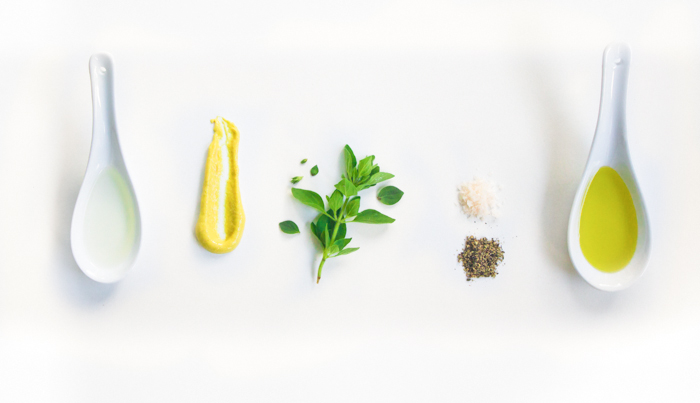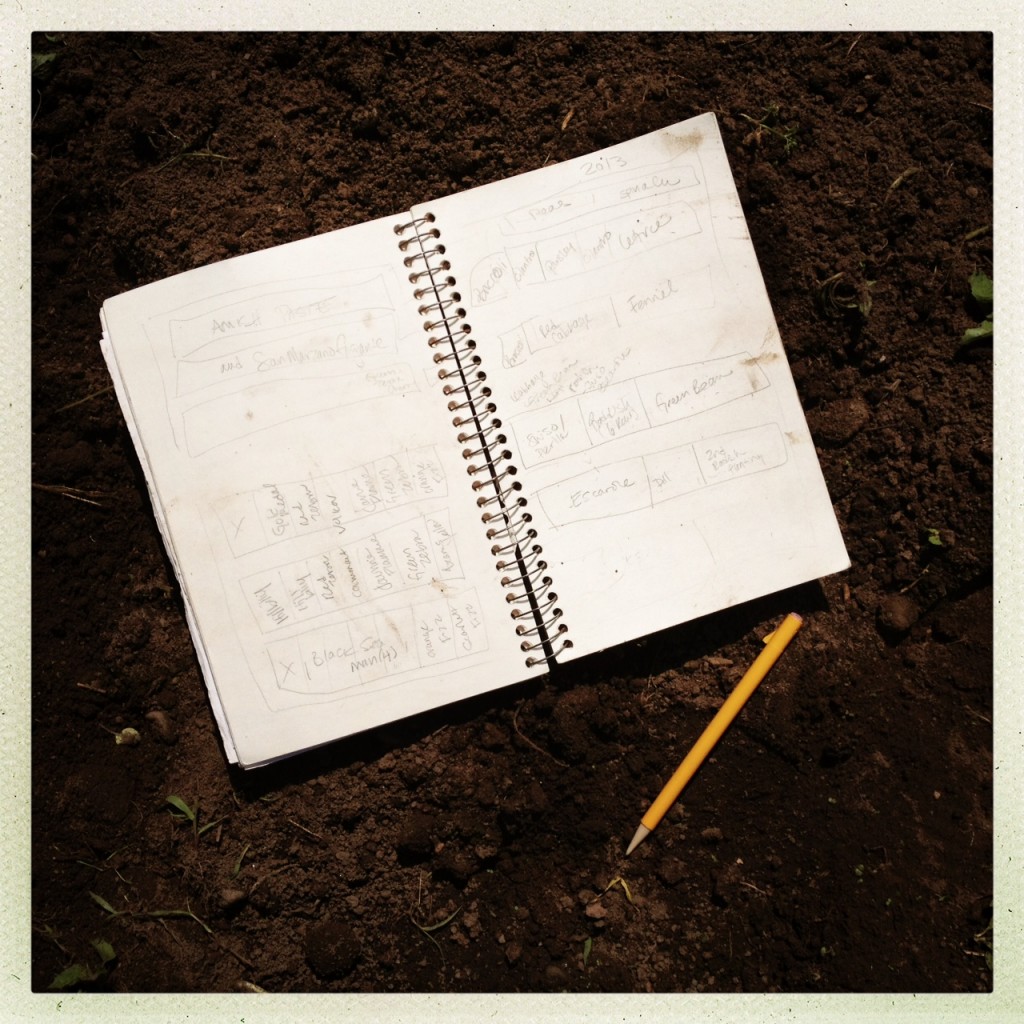I love rhubarb. I love it for it's old fashioned vibe. I love it for it's color, striking tartness, and even for it's moderate shelf life. I also love it for showing up so darn early in the spring and sticking around for several months. And I too was at first intimidated by those long, irregular-shaped, tough magenta stalks at the market. I actually overheard a conversation at our market up here recently, where a woman who had just bought a weekend house near the Delaware discovered she had huge decades-old rhubarb plants growing on her property. However she didn't know when it was time to pick them. Nor did the young woman working the farm stand, so I jumped in with what I knew. She had been waiting for them to turn red, ripen, to pick. I explained that some heirloom varieties, have very little red, and the stalks can range from thin to the thicker more uniform we're used to seeing in grocery stores. I generally go by feel, but you can harvest stalks when between ten and fifteen inches long, avoiding letting them go too long and become tough, dry or woody. Once you get your rhubarb back you your kitchen, from yard or market, they really are one of the most simple fruit to prepare. Make sure all traces of the leaves are trimmed off, as they are not edible. Rhubarb have a bad rap for being stringy, as in celery stringy, but as long as they are cut in small pieces before cooked, the strings will not be a nuisance. For good measure, or habit, I tend to peel two or three strings off each stalk, from end to end, but not too much, as you are also peeling off any of the great magenta color. Wash the stalks well and then cut into slices between an half inch and an inch thick. You can then roast the pieces, throw them in to brighten up a rich stew, or as I do most often, simmer them down to a quick rhubarb puree or sauce. Pack the rhubarb into a sauce pan or small pot that holds the pieces sort of snugly. Add enough water to come up about 3/4 of the way up the sides of the slices, and simmer over a medium-low heat, until the rhubarb has broken down and is tender. Add more water if the mixture seems to be getting to dry or risking burning at all. When finished you can mash it up a little to have a sauce with more texture, or use a food processor, blender or immersion blender to give you smoother final product. If you are looking to use the sauce as a topping by itself, add about a tablespoon of sugar per large stalk of rhubarb when simmering down, or another classic way to cut rhubarb's intense sourness is to add at least 1 part strawberries for every 3 parts rhubarb when starting the sauce. Taste when finished and adjust sweetness if necessary. Vanilla beans, ginger, orange, cinnamon, almost all berries and apples are all great additions as well. Make a big batch. Eat it warm or ice cold. Spoon it over ice cream, blend it into cream cheese, swirl it in yogurt or oatmeal, drizzle it over a wedge of Stilton or duck or game meats, whisk it into your vinaigrette, blend it with ice for your margarita. Really, what other fruit, the northeast no less, is quite so versatile? | ||||||||||||||||
 For another step in my continued fight to close down the salad dressing aisle in grocery stores, I'll offer you a homemade salad dressing recipe each week. Fresh oregano certainly has a pronounced flavor, but actually so much more mellow and herbal and complex than what dried drab green flecks and pizza restaurant shakers have lead you to believe. We had this dressing last night on crisp fresh red leaf romaine, a small handful of fresh sorrel leaves (both sliced into ribbons, both from our garden), cucumber, and a generous handful of toasted sesame seeds. This vinaigrette would also be incredible on a salad of baby spinach, chickpeas and sliced hardboiled egg, or as a base for a potato salad. Also, P.S., oregano is probably the most idiot-proof herb to grow, super hearty, pops up first in the spring and faithfully returns each year. Grab a plant and stick it almost anywhere in your yard now for years of salad dressings and marinaras to come.
| ||||||||||||||||||||||
When I refer to our microfarm, I am talking about just over five thousand square feet of heirloom gardening spaces, that my husband and I have carved out, cared for, slowly added to and greatly benefitted from for the last almost decade. Our home sits on a very rural, mostly wooded, forty-five acres, so anytime we felt like we could handle a little more weeding, or heard from enough friends what a thrill it was to dig up potatoes in the fall—in went another sizeable garden space. Until we are now left with our own personal work camp in the Catskills. Collectively, this year is the largest to date. Two summers ago I was well into my pregnancy, and not so agile in the bending-digging-weeding routine. Last summer we had a seven month old son who cut our two-person-powered time to bend-dig-weed exactly in half, needing to be nursed or held or kept out of the fierce sun by one of us almost at all times. Each season we vow to go easy on ourselves. Each season we do just a little more than what would be considered sane. Compared to previous years, we felt like we had it wholly together this time, and are planted to capacity—despite the fact that the plan had been to leave our oldest and largest space empty for a season to sensibly replenish. But I once again fell victim to the gorgeous seed catalogues, web sites, and that plant pusher, Trina, at the incomparable Silver Heights Farm, and can not cut myself off once my palms get sweaty and pulse quickens. Because in the end it is about food! Food I remember from some meal, food I can’t easily buy around these rural parts, food I can’t get until this time of year, food I have been dying to try to cook with, and more than anything, food I am picturing laying out on a giant rustic white platter and presenting to a dozen or so dear friends seated around the table made of antique barn wood on our porch. How can I possibly expect to limit myself? (more…) | ||||||||||||||||
My son just celebrated his very first birthday. I was naturally flooded with an enormous range of huge emotions. But, instead of being very weepy and nostalgic for the entire month prior, staring at him constantly, willing time to stop, I instead funneled all of my sentimentalism into obsessing about his very first birthday cake. This process was not unlike trying to make each precious decision about our wedding. Would this be the best choice, that I will then look back on in a decade and remember with zero regrets and nothing but fondness? Or even more, is this the best choice of all of the options I have entertained in my mind imagining this day for the last 3+ decades? Of course, an impossible assignment. But wanting it to be a perfect day and first cake experience for him, I pored over old family recipes scribbled in pencil on cocoa-powdered index cards. My first thought was my dad's carrot cake recipe. It is spectacular. But I kept looking, and came across again Aunt Margaret's Chocolate Frosting. It is the perfect, dark, rich, everything your yellow birthday cake screams for recipe. It is one of the top three recipes in our family's repertoire. Certainly worthy of a first birthday party. I then pictured him smashing his first piece of his first birthday cake into his face with his chubby hands, and pictured dark brown Jackson Pollock's covering the walls of my grandparents' condo. (I also then remembered a first birthday I attended where the cake was red velvet, leaving the kid and high chair looking like something out of a slasher film.) So opting for a more neutral hued confection, I finally settled on the dense-banana-cream cheese-miracle that is Amy's Bread's Monkey Cake Ok, so what's the point? The point is that he's one, and loved the cake, and mostly likely would have loved any cake. I loved obsessing over what to make, baking it for him, whipping the frosting, and seeing him literally lick the plate. I also loved that it was an opportunity to really go back to my cookbooks, my notes and my recipe cards and rediscover old favorites. And work on something that I was excited to share with the people I love. That, after all, is exactly why I cook.
 | ||||||||||||||||||||||
|
|
{ welcome! }
 Catie Baumer Schwalb is a chef, food writer and photographer, who splits her life between the city and the country. Not too long ago Catie was a New York City based actress and playwright for more than a decade. She has her Master of Fine Arts from the National Theater Conservatory, and her Grand Diplôme in classic culinary arts from the French Culinary Institute in New York City.
... Read More ≫
Catie Baumer Schwalb is a chef, food writer and photographer, who splits her life between the city and the country. Not too long ago Catie was a New York City based actress and playwright for more than a decade. She has her Master of Fine Arts from the National Theater Conservatory, and her Grand Diplôme in classic culinary arts from the French Culinary Institute in New York City.
... Read More ≫{ get in touch }
{ what's new }
September 12, 2015
August 19, 2013
August 15, 2013
August 13, 2013
August 1, 2013
{ favorites }
{ archives }
Appetizers / Breads & Pastry / Breakfast / Cakes / Canning / Condiments / Dinner / DIY foods / Drinks / Fall / favorites / Grains / Holidays / Local / Noodles & Pasta / Pies & Tarts / Poultry / Salads / Seafood / Snacks / Soup / Spring / Summer / Sweets / Techniques / Vegetables / Vegetarian / Winter /
{ currently reading }
|












